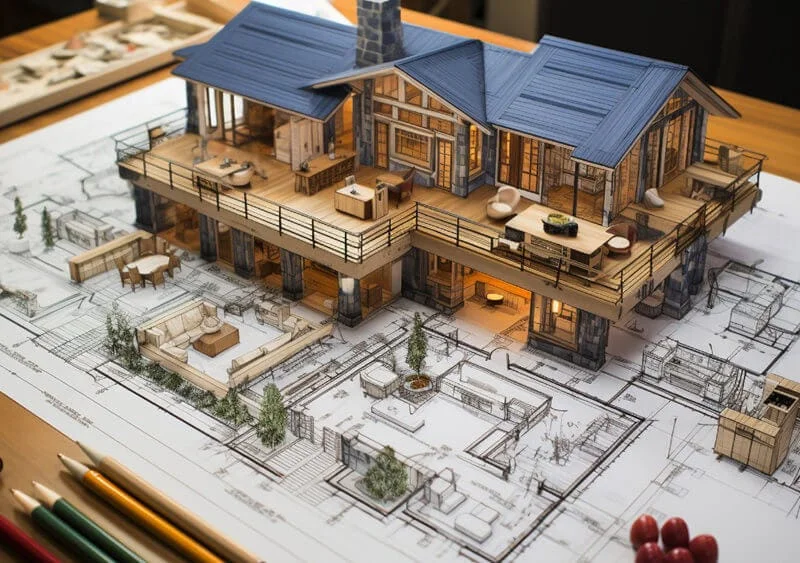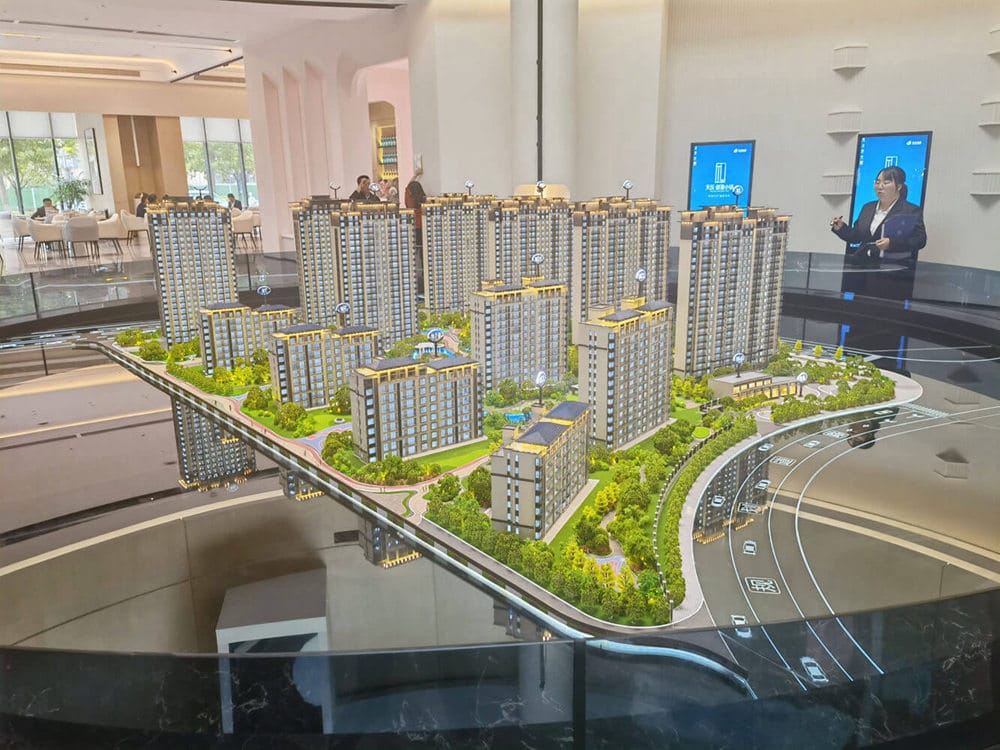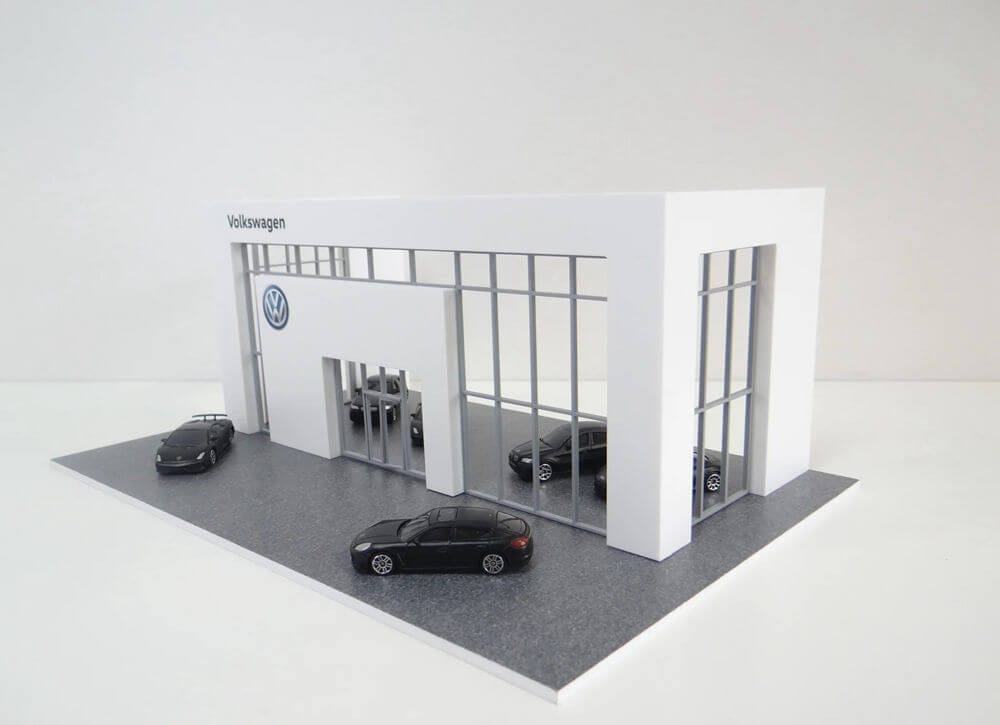Di dalam pembuatan model arsitektur, Memilih materi yang tepat sangat penting, keputusan strategis yang memengaruhi setiap aspek produk akhir. It goes far beyond simple aesthetics; it’s crucial for achieving the desired outcome at each stage of the design process. Dari model konseptual using affordable materials like papan busa Dan kardus ke model presentasi requiring more refined options like akrilik Dan kayu, material choice affects daya tahan, presisi, Dan aesthetic appeal. Increasingly, bahan ramah lingkungan menyukai plastik daur ulang Dan biodegradable foams are gaining traction for sustainable designs. Understanding how to handle, cut, and bond these materials, along with avoiding common mistakes, will help elevate your models. Experimentation and flexibility with materials can enhance both design expression and model quality. This guide will provide the expert insights you need to make informed choices for your next project.
Daftar isi
The Importance of Material Selection in Architectural Models
Bahan: The Foundation of Every Architectural Model
When it comes to architectural models, materials are far more than just “stuff” to build with. They’re the unsung heroes of the design process, shaping how a concept is perceived, understood, and experienced. The right material can transform a simple sketch into a tangible piece of art, bringing out the soul of a design and helping it leap off the page (or the screen, or the drafting table) and into the real world. Without the proper materials, even the most brilliant architectural ideas can fall flat—just like trying to build a house on a foundation of quicksand. This is a foundational topic we introduce in our pillar page, Panduan Utama untuk Model Arsitektur High-End.
Why does material selection matter? Dengan baik, imagine trying to convey the sleek, modern lines of a high-rise with something that looks and feels like cardboard. Not quite the message you’re aiming for, Kanan? Materials do more than represent the physical characteristics of a building—they help express the skala, membentuk, tekstur, Dan design intent behind the structure. Materials bring your vision to life and help others understand the dream you’re trying to communicate.
The right materials can also define the mood Dan emosi model Anda. Whether you’re using the smooth, transparent finish of acrylic to convey modernity or the earthy, natural feel of wood to evoke warmth and sustainability, each material choice sends a message about the design. And beyond aesthetics, materials also play a crucial role in functionality—helping to test out structural ideas, demonstrate proportions, and ensure that the final product is just as solid as the vision behind it.
Purpose of the Article: Your Ultimate Guide to Material Selection
Jadi, why are we here today talking about architectural model materials? The answer is simple: choosing the right material is like choosing the right color palette for a painting. It’s all about communicating the right message, in the right way, at the right time. Whether you’re working on a conceptual model that tests out new ideas or a final presentation model that will be used to woo clients, the materials you choose will directly affect how your design is perceived.
Dalam artikel ini, we’ll help guide you through the labyrinth of materials available for architectural model-making. You’ll learn which materials are best suited for different stages of the design process, from early conceptual sketches to refined, detailed presentations. Along the way, we’ll explore the benefits and drawbacks of various materials—whether you’re aiming for something cost-effective, tahan lama, atau menakjubkan secara visual.
By the time you finish reading, you’ll have a solid understanding of how to select the perfect materials based on your project’s specific needs, whether it’s for design exploration, client engagement, atau final presentation. Ready to dive in? Let’s get started!
Key Factors to Consider When Choosing Materials for Architectural Models
The Project Stage: From Concept to Reality
Choosing the right material for your architectural model is like picking the right outfit for a big event—it all depends on the occasion. The stage of your project determines whether you need something quick and conceptual or something that can survive scrutiny under a spotlight.
For a conceptual model, you’re not necessarily looking for perfect finishes—you’re exploring basic shapes, volume, dan hubungan spasial. Foam boards, kardus, Dan kertas are your go-to materials here—lightweight, murah, and easy to manipulate. The idea is to get the concept across, not stress about the fine details.
But when you move into model kerja, where the design is more refined and needs to test out functionality and proportion, materials need to step it up. Think basswood, kayu balsa, Dan akrilik. These materials are ideal for more intricate details and give you the durability you need for testing without sacrificing too much time or cost.
Kemudian, there’s the final presentation model. This is where your design will be showcased in all its glory—so it needs to shine. This is the asset that will help you double your sales. Materials like akrilik, damar, atau logam are perfect for this stage. You need precision, clean finishes, and durability to withstand handling while also providing that “wow” factor when it hits the boardroom or display table.
Budget Constraints: Building Dreams on a Budget
Ah, the eternal dilemma of every architect: trying to make your vision come to life without breaking the bank. Budget constraints are a big factor when selecting materials. If you’re working on a conceptual model, the budget might be tight—and that’s okay! Materials like kardus, papan busa, Dan kertas are affordable and versatile, perfect for brainstorming and quick sketches. These materials do the job without the hefty price tag.
When you get into more detailed or working models, costs can start to rise, especially when using high-end materials like kayu, damar, atau akrilik. These materials allow for more intricate detail and durability. The trick here is to balance fungsionalitas dengan cost-effectiveness—use pricier materials where they matter most and opt for budget-friendly options where they won’t be the star of the show. For a deep dive into this topic, our guide on itu 5 Faktor kunci harga model arsitektur is essential reading.
For large-scale or long-term projects, planning is key. Recycled materials can be an eco-friendly (and cost-effective) choice. Materials like reclaimed wood atau plastik daur ulang can provide strength and durability without inflating your budget. Kadang-kadang, it’s not just about the materials you choose, but how creatively you can use them.
Time Requirements: Racing the Clock
Time is money—especially in the world of architectural model making. How quickly you need to produce your model will directly impact the materials you choose. If you’re in a time crunch and need a conceptual model cepat, stick with materials that are easy to manipulate and require minimal effort to assemble. Materials like kardus, papan busa, atau kertas will allow you to knock out rough ideas without getting bogged down in the details. The focus is on speed, not perfection.
Untuk lebih lanjut detailed models atau model presentasi, the timeline is likely longer, and that’s where akrilik, kayu, atau damar come into play. These materials require more time to work with, especially for sanding, cutting, dan penyelesaian, but the result is a model that stands up to scrutiny. In this case, the time spent is worth the added durability and visual impact. Technologies like pemotongan laser Dan 3D Pencetakan can help speed up processes, especially when it comes to precision cuts or intricate detailing.
Design Intent: What’s the Big Idea?
What’s your design’s story? Is it a futuristic skyscraper with sleek glass facades, or a rustic countryside cottage with textured wooden beams? The materials you choose should reflect your design intent and communicate that essence clearly. If you’re designing a model with a focus on modern aesthetics, materials like akrilik atau kaca will help convey sleek, polished finishes, and transparency. For designs that aim for warmth Dan earthiness, materials like kayu, gabus, atau bambu can add a natural feel that reflects the overall atmosphere you’re going for.
Don’t forget about the skala Dan proporsi model. Materials like papan busa can help illustrate bulk and volume quickly, while more refined materials like basswood atau logam are perfect for highlighting architectural detailing. As we discuss in our guide to menemukan keseimbangan sempurna antara skala dan detail, the material’s texture and thickness must be appropriate for the chosen scale. The materials you choose will help make the design’s story clearer and more impactful, allowing the model to communicate your ideas even before anyone reads the brief.
Durability and Stability: Ujian Waktu
You’ve put all that effort into crafting a model—now, you want it to last. Durability is essential, especially when models will be transported, displayed, or handled by multiple people. Some materials are more durable than others. If your model needs to endure constant handling, be sure to use sturdy materials that can withstand wear and tear.
Akrilik, kayu, Dan logam offer excellent durability and will hold up well over time. Damar Dan papan busa, di sisi lain, are better for short-term use or models that will remain stationary. If your model is being displayed outdoors or in an area with fluctuating temperatures, you’ll want to choose materials that aren’t prone to warping or damage. Durability is especially critical if your model needs to be shipped, a process we cover in our Panduan untuk Model Pengemasan dan Pengangkutan.
It’s also important to consider environmental factors. Exposure to sunlight can fade certain materials over time, so if your model is going to be on display in a bright room or under direct light, you’ll want to opt for materials like akrilik atau logam that won’t degrade or discolor. The durability of your model impacts how well it can withstand the stresses of its intended use—so choose wisely.
| Faktor | What to Consider | Best Materials for the Job |
|---|---|---|
| Project Stage | Konseptual, bekerja, or presentation models require different levels of detail. | Konseptual: Papan busa, kardus, kertas; Working: Kayu, damar; Presentation: Akrilik, logam |
| Budget Constraints | Stay within budget while achieving the desired quality and detail. | Terjangkau: Kardus, busa; Mid-range: Kayu, akrilik; High-end: Logam, damar |
| Time Requirements | Speed of production impacts material choice—quicker models use lighter, simpler materials. | Quick models: Kardus, busa; Model terperinci: Akrilik, kayu, damar |
| Design Intent | Choose materials that reflect the aesthetic and emotional qualities of the design. | Modern: Akrilik, kaca; Natural: Kayu, gabus, bambu |
| Durability & Stability | Ensure materials stand up to handling and environmental factors like light and temperature. | Tahan lama: Akrilik, kayu, logam; Short-term: Damar, busa |
Choosing the right materials for your architectural model is like finding the perfect puzzle pieces—it all needs to fit together just right. By considering the project stage, anggaran, waktu, design intent, and durability, you can craft a model that not only looks impressive but also communicates your ideas effectively. So whether you’re creating a quick prototype or a show-stopping presentation piece, the materials you choose will play a starring role in your model’s success.
Common Materials Used in Architectural Models
Bahan Tradisional: The Classics
Kertas: The MVP of Conceptual Models
If you’re just getting started with a new design and need to quickly whip up a concept, kertas is your best friend. Cheap, serbaguna, and ready for action, paper is perfect for those early design phases when you’re still testing out shapes and forms. Need to fold, melengkung, or make a crazy abstract design? Paper can handle it without breaking a sweat.
- Keuntungan: Murah, flexible, and easy to use with basic tools.
- Kekurangan: Fragile and not durable for long-term use.
- Penggunaan Terbaik: Pembuatan prototipe cepat, early-stage design experiments, and testing massing before committing to expensive materials.
Kayu (Balsa, kayu bass): Ringan, Yet Mighty
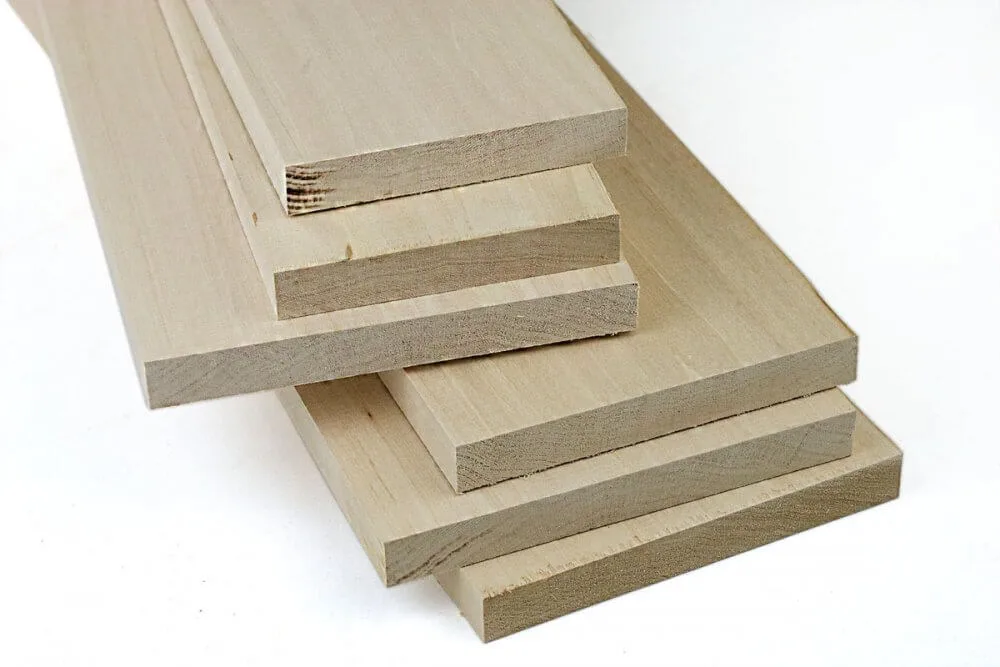
When it comes to architectural models that need both strength Dan detail, kayu is a solid choice. Balsa Dan basswood are two of the most popular options for creating precise, elemen struktural. These woods are light, mudah dipotong, and can be sanded to perfection, which makes them ideal for intricate designs like doors, windows, and framing. The choice between these traditional materials and newer methods is explored in our guide on Kerajinan modern vs.. Pekerjaan tangan tradisional.
- Keuntungan: Easy to cut, durable despite being lightweight, and has a fine texture for detailed surfaces.
- Kekurangan: Can be costly for large models and may chip or splinter if not handled properly.
- Penggunaan Terbaik: Detailed architectural features (windows, pintu, moldings) and structural components in models that need extra durability.
Cardboard/Chipboard: The Workhorse
Kardus (atau chipboard) might not have the glam of shiny acrylic, but it’s a tried-and-true favorite for architectural model makers on a budget. Ringan, mudah diajak bekerja, and inexpensive, cardboard is often the material of choice for initial models and massing studies.
- Keuntungan: Cost-effective, mudah diajak bekerja, and versatile in thickness and finish.
- Kekurangan: Not built for the long haul; it can be flimsy and may bend or warp over time if not reinforced.
- Penggunaan Terbaik: Basic massing models, jalan raya, lanskap, and large-scale context components.
Cork: The Textural Touch
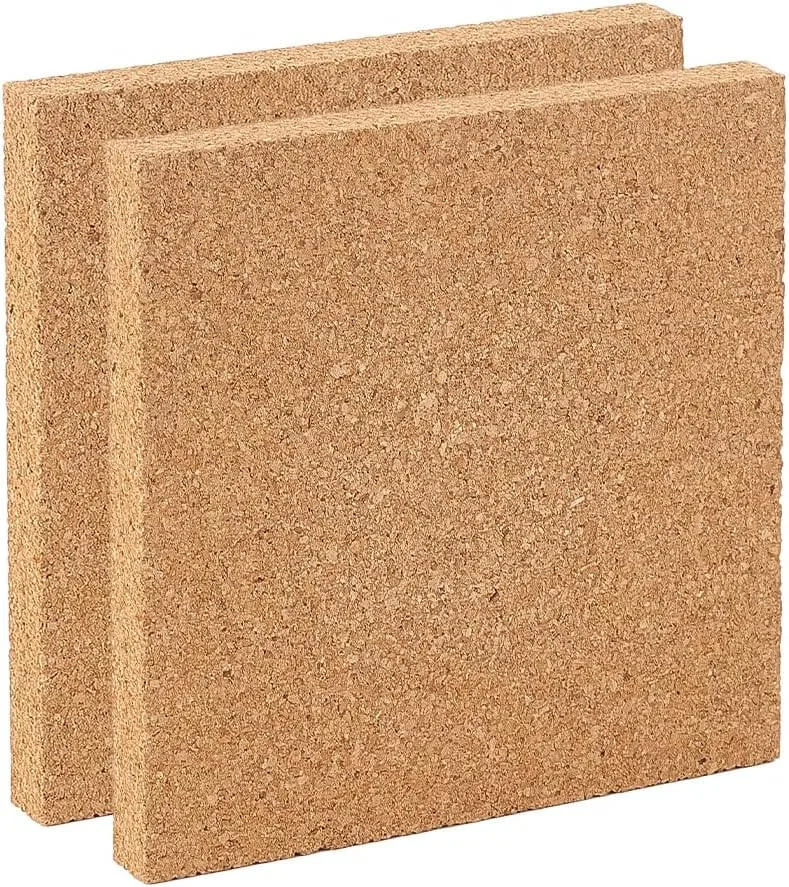
When it comes to tekstur, gabus is the go-to material for adding that earthy, tactile quality to architectural models. Ini ringan, mudah dipotong, and perfect for adding a natural aesthetic to your design. Whether you’re creating floors atau base layers, cork gives your model a bit of that je ne sais quoi. It’s an excellent material for creating realistic ground cover, topik yang kami bahas Rahasia lansekap model realistis.
- Keuntungan: Ringan, provides a unique surface texture, and is easy to cut.
- Kekurangan: Can be easily damaged (stained, torn, or crushed) and requires care in finishing.
- Penggunaan Terbaik: Flooring or textural surfaces, natural finishes or landscaping details, and base layers for additional detailing.
Bahan Modern: The New Kids on the Block
Papan Busa: Ringan & Ready for Anything
Papan busa is a staple in architectural model-making, particularly when you need to create large-scale context models atau studi massal quickly. It’s light, mudah dipotong, and offers clean, sharp edges that will make your model look crisp and professional. Whether you’re working on background models atau a site analysis, foam board is a quick way to bring your vision to life.
- Keuntungan: Quick to work with, stable and durable for its weight, and creates clean edges.
- Kekurangan: Can be fragile if not handled with care, and sensitive to environmental changes.
- Penggunaan Terbaik: Large-scale context models, early-stage design exploration, and background models for more detailed presentations.
Akrilik (kaca plexiglass): Transparent Perfection
If you’re looking for a sleek, modern material that adds transparency and light to your model, akrilik is the way to go. This clear, plastic material is perfect for representing glass facades, windows, or other transparent architectural elements. Plus, its glossy surface reflects light beautifully, adding a touch of kemewahan to any model, especially when paired with a thoughtful design from our guide on the Strategic Use of Lighting.
- Keuntungan: Transparent, versatile for cutting and shaping, and provides a modern aesthetic.
- Kekurangan: Requires precision to cut properly and can be easily scratched.
- Penggunaan Terbaik: Glass elements (windows, pintu), sleek finishes for modern designs, and decorative elements that need to interact with light.
Plastik: Terjangkau & Functional
Plastik is one of the most terjangkau Dan serbaguna materials for architectural models. Whether you’re building model topografi atau landscape elements, plastic offers flexibility without breaking the bank. Ini ringan, tahan lama, and easy to manipulate, making it a favorite for larger-scale projects that require quick, solusi hemat biaya.
- Keuntungan: Ringan, affordable for large projects, and versatile for molding and cutting.
- Kekurangan: May require layering to achieve certain heights and can look less polished if not used carefully.
- Penggunaan Terbaik: Topography models, landscape elements like hills and roads, and larger, simpler models that need to be cost-effective.
Damar: Detail at Its Finest
For those looking to achieve intricate details, damar is the secret sauce. This material excels at replicating fine textures, creating lifelike lanskap, and even crafting figurines atau fitur air. While resin can be more expensive and time-consuming to work with, the results are worth the effort, especially when created with the precision of SLA 3D printing.
- Keuntungan: Great for capturing fine details and textures, customizable for almost any shape, and durable once set.
- Kekurangan: Bisa mahal, terutama untuk model yang lebih besar, and is time-consuming to work with.
- Penggunaan Terbaik: Small-scale details and textures, fitur air, lansekap, and creating realistic models for high-end presentations.
Logam (Aluminium, Copper, Steel): Strength Meets Style
When you need strength Dan sophistication, logam delivers. Materials like aluminium, copper, Dan steel are ideal for detail struktural, reinforcement, or representing high-end finishes. These metals add a dipoles, industri feel to any model, making them perfect for designs with a modern, robust aesthetic.
- Keuntungan: Durable and stable, malleable for shaping, and provides a high-end, polished finish.
- Kekurangan: Requires special tools and expertise to work with and can be expensive.
- Penggunaan Terbaik: Structural reinforcement, detailed high-end finishes, and architectural elements like frames, kolom, and beams.
This comprehensive look at materials provides the variety you need for every project. The right material can elevate your design, making it more detailed, tahan lama, and visually stunning. Whether you’re on a budget or aiming for perfection, understanding the strengths and weaknesses of each material will ensure your architectural model is ready to impress.
Eco-Friendly and Sustainable Materials for Architectural Models
Biodegradable Materials: Green is the New Black
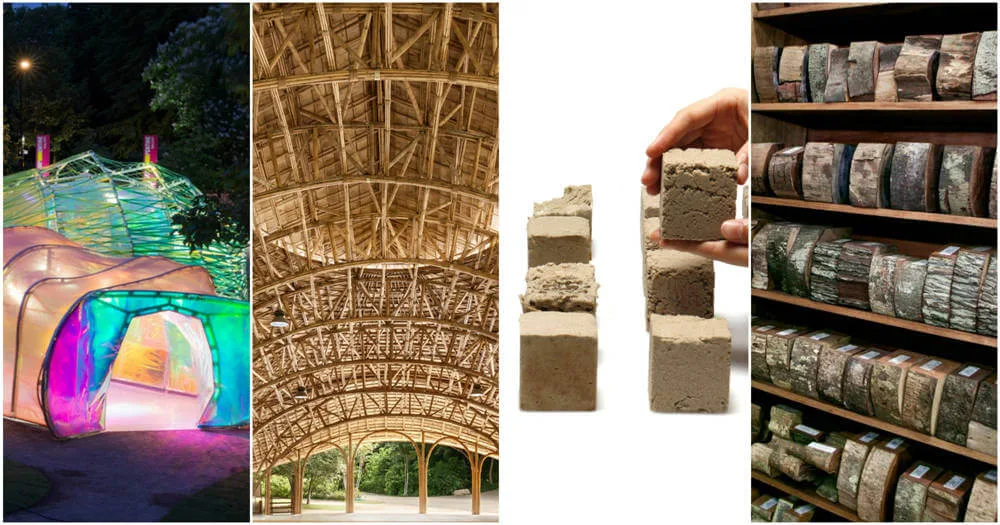
Sustainability isn’t just a buzzword—it’s the future of architecture. As the world turns greener, so too does the way we create architectural models. Enter bahan yang dapat terbiodegradasi—the eco-friendly heroes that are making traditional materials look a bit… old-fashioned. These materials are not just good for the planet, they can also deliver hasil yang menakjubkan in your models, all while reducing your environmental footprint.
- Examples: Plastik daur ulang, plant-based foams (from cornstarch or mushroom mycelium), and biodegradable resins.
- Keuntungan: Eco-friendly, reduces waste, and aligns with green building practices.
- Kekurangan: May not always be as durable or long-lasting as traditional materials and may lack the polished look for high-end presentation models.
- Penggunaan Terbaik: Projects with a sustainability focus and conceptual or eco-friendly models.
Recycled Materials: The Circle of Life (For Materials)
If you’re not into bahan yang dapat terbiodegradasi, there’s always a solid fallback: recycled materials. These materials are the true recyclers dari dunia arsitektur, taking something old and giving it a new life. Recycled paper, kardus, Dan plastik aren’t just good for the environment—they’re also versatile and surprisingly effective when creating konseptual Dan structural model.

- Examples: Recycled paper/cardboard and recycled plastics.
- Keuntungan: Sustainable, reduces waste, and sends a powerful eco-conscious design message.
- Penggunaan Terbaik: Small-scale conceptual models and environmentally sensitive projects.
| Jenis Bahan | Examples | Keuntungan | Penggunaan Terbaik |
|---|---|---|---|
| Biodegradable Materials | Plastik daur ulang, plant-based foams, biodegradable resins | Eco-friendly, reduces waste, aligns with green building practices | Projects focused on environmental sustainability |
| Recycled Materials | Recycled paper/cardboard, plastik daur ulang | Sustainable, reduces waste, eco-conscious design | Small-scale models, environmentally sensitive projects |
By incorporating dapat terurai secara hayati Dan recycled materials, architects and designers can champion sustainability while still delivering effective and aesthetically pleasing models. These materials prove that making a positive environmental impact doesn’t mean compromising on quality or creativity.
Specialized Materials for Detailed Architectural Models
Glass: Transparency at Its Finest
If you’re aiming for presisi Dan realisme, Kemudian kaca should be at the top of your materials list. This material isn’t just for windows in the real world—it’s the go-to choice for creating transparent features Dan glass facades in architectural models. Want to make your building look like it’s gleaming under the sun or sparkling under artificial lights? Glass is your ticket to reflecting light Dan showcasing transparency.
- Keuntungan: Unparalleled clarity and realism.
- Kekurangan: Fragile and requires precise, specialized cutting techniques.
- Penggunaan Terbaik: Glass facades, windows, pintu, and sleek, contemporary buildings.
Synthetic Fabrics: The Fabric of Nature

Kadang-kadang, you need to take your model to the next level with some realistic texture. Enter synthetic fabrics, the unsung heroes when it comes to adding fitur lansekap Dan terrain textures. Whether it’s for rolling hills, textured surfaces, or a shimmering body of water, synthetic fabrics help bring your model’s environment to life with a touch of fleksibilitas Dan detail.
- Keuntungan: Can replicate soft, organic textures realistically and are flexible for shaping.
- Kekurangan: Can be difficult to fit and glue into tight spaces.
- Penggunaan Terbaik: Landscape features like grass or fields, simulating water bodies, and creating other natural terrains.
Photoluminescent Materials: Glow in the Dark? Ya, Please.
Ever wanted your model to shine—literally? Di sanalah photoluminescent materials come into play. These materials absorb light and then release it in the form of a soft glow once the lights go out. They’re perfect for creating dramatic lighting effects or highlighting specific features of your model, menyukai emergency exit routes atau lighting systems. They are a key component of the future, as detailed in our guide to Teknologi Interaktif dan AR.
- Keuntungan: Creates a dramatic, unik “Wow” factor and highlights features in the dark.
- Kekurangan: Can be costly and may not be practical for all projects.
- Penggunaan Terbaik: Highlighting lighting systems or emergency exits, creating unique nighttime visual effects, and making interactive models.
| Jenis Bahan | Examples | Keuntungan | Penggunaan Terbaik |
|---|---|---|---|
| Glass | Transparent elements, glass facades | Clarity, realisme, reflective properties | Windows, fasad, modern architectural features |
| Synthetic Fabrics | Landscape fabrics, water bodies, textured surfaces | Realistic textures, fleksibilitas | Terrain modeling, fitur lansekap, fitur air |
| Photoluminescent Materials | Glow-in-the-dark paints and plastics | Dramatic effects, unique lighting, interaktif | Lighting systems, emergency exits, nighttime visuals |
Incorporating specialized materials adds kedalaman, realisme, Dan visual intrigue. Whether you’re aiming for modern elegance with sleek glass facades or a dramatic glow, these materials elevate your designs and help tell a more dynamic story. With the right tools and a bit of creativity, your models won’t just be accurate—they’ll be extraordinary.
Choosing the Right Material for Your Architectural Model
Design Type: Tailoring Your Material to the Model’s Purpose
Selecting the perfect material for your architectural model isn’t just about choosing what looks good—it’s about matching the material to the tujuan model. Think of it like picking the right pair of shoes for an event: You wouldn’t wear flip-flops to a black-tie dinner, and you wouldn’t wear dress shoes to a hike (unless you’re some kind of fashion-forward adventurer). The same applies to architectural models.
Untuk conceptual testing, speed and flexibility are key. You need materials that allow you to quickly explore ideas, test shapes, and iterate. Kertas, kardus, Dan papan busa are your best bets here. They’re lightweight, mudah dipotong, and cheap enough that you don’t feel guilty about throwing away a few versions before landing on the right one.
When it’s time to get serious, and the model is heading toward presentasi atau client engagement, your material choices need to be more refined. Untuk high-detail models that will be used to impress investors or stakeholders, materials like kayu, akrilik, Dan damar are ideal. These materials not only look more polished, but they also provide a cleaner finish Dan structural integrity. Clients expect sophistication Dan presisi at this stage—so the material should reflect that.
Practical Considerations: The Logistics of Material Selection
We all love a good design challenge, but let’s be real—practicality plays a big role in material selection. Durability, cost, kemudahan penggunaan, Dan availability should be your guiding stars. Bagaimanapun, there’s no point in choosing the fanciest material if it’s too expensive or difficult to work with.
- Durability: How well does the material hold up? Will it stand the test of time, or is it fragile and prone to damage? For long-term projects, kayu, akrilik, Dan logam are strong contenders. For quick prototypes or model konseptual, materials like kardus Dan busa might work fine, but they won’t last forever.
- Biaya: Budget plays a major role. If you’re working with limited resources, go for cost-effective materials that don’t sacrifice quality. Kardus, papan busa, Dan recycled materials can give you a lot of bang for your buck.
- Ease of Use: Some materials are a breeze to work with, while others require special tools and skills. Papan busa? Mudah. Akrilik atau logam? Not so much unless you have a laser cutter and some experience in precision cutting.
- Availability: Make sure you can easily get your hands on the materials you need. If you’re in a rush, a trip to the local hardware store or art supply shop for kardus Dan papan busa is a lot easier than sourcing specialty damar atau logam.
Skill and Tools: Complexity Adds Another Layer
It’s no secret that some materials are more complex to work with than others. Just like some recipes require a sous-vide machine and a sprinkle of gourmet salt, others are fine with instant noodles. If you’re working with a simple design and you’ve got a tight deadline, the complexity of the material won’t matter much. But if you’re diving into something more intricate, be prepared to bring out the big guns—or at least the proper tools.
Some materials require specific tools, and if you don’t have access to them, you could end up frustrated (and possibly with a few misplaced cuts). Akrilik Dan kayu can be a dream to work with if you have access to pemotong laser atau precision saws, but without these tools, they can quickly become a nightmare. Materials like busa atau kardus? They’re forgiving and easy to manipulate with basic craft knives and scissors—no special tools required.
The more complex the material, the more time and skill you’ll need. Jadi, be honest with yourself: Are you ready for the challenge? Do you have the necessary tools? If you’re unsure, it might be better to go with something simpler and more forgiving.
Client Preferences: Green or Clean?
Not every client is focused solely on aesthetics. Some may have a specific philosophy they want to align with, and materials can play a big role here. For eco-conscious clients, berkelanjutan Dan recycled materials are a priority. For others, they might be after a particular look—say, A sleek modern finish atau a rustic, nuansa alami.
- Bahan Ramah Lingkungan: If sustainability is a priority, think about incorporating bahan yang dapat terbiodegradasi, recycled paper, kayu, atau bahkan plant-based foams. These are perfect for clients who want their design to align with green building practices and environmental stewardship.
- Aesthetic Preferences: Some clients may have a preference for a specific material aesthetic—whether they’re into high-end finishes menyukai akrilik Dan logam, or they want something that feels earthy Dan authentic menyukai kayu atau gabus. Understanding their style will help steer your material choices.
| Consideration | What to Keep in Mind | Ideal Materials |
|---|---|---|
| Design Type | Choose materials that fit the stage—conceptual, bekerja, or presentation. | Konseptual: Papan busa, kardus; Presentation: Kayu, akrilik, damar |
| Practical Considerations | Durability, cost, kemudahan penggunaan, and availability all matter in the material choice. | Budget-Friendly: Kardus, busa; Tahan lama: Kayu, akrilik, logam |
| Skill and Tools | Materials require different tools and skills—be honest about your ability. | Mudah Digunakan: Papan busa, kardus; Kompleks: Akrilik, kayu, logam |
| Client Preferences | Consider eco-conscious designs or specific material preferences. | Eco-Friendly: Recycled materials, biodegradable options; Aesthetic: Akrilik, kayu |
Choosing the right material for your architectural model isn’t a decision to take lightly. It’s about finding the perfect balance between your design goals, anggaran, Dan available tools. With a little thought, you’ll have the perfect material for your project—whether it’s a quick conceptual model or a show-stopping presentation piece that wows your clients. Jadi, pick wisely, and remember, the material you choose is just as important as the design itself!
Tips for Working with Architectural Model Materials
Material Handling: Crafting Your Model with Precision
When it comes to pembuatan model arsitektur, handling materials properly is half the battle. Whether you’re cutting, gluing, or finishing, each material comes with its own quirks, and mastering those is what separates the amateurs from the pros. Think of it like baking a cake—you can’t just throw the ingredients together and hope for the best. You need the right techniques, peralatan, and a little bit of finesse.
Cutting Materials:
When it comes to cutting, precision is key. You don’t want to end up with jagged edges on a clean-cut design. For paper, kardus, and foam board, A sharp utility knife is your best friend. If you’re working with thicker materials like wood, you’ll want something stronger—handsaws, jigsaws, or even a laser cutter for ultra-fine cuts. Always measure twice, cut once! And don’t forget about safety—be sure to use a stable cutting surface (like a cutting mat) to protect both your materials and your work surface.
Bonding Materials:
When it comes to bonding materials together, the right adhesive can make or break your model. Wood glue works wonders for kayu Dan balsa proyek, ketika foam-safe glue is your go-to for anything foam-based. Be cautious with superglue—it’s quick and strong, but if you’re not careful, it can make a mess. Acrylic cement is a must for acrylic—this glue melts the edges slightly, forming a strong bond that looks like it’s almost seamless.
Finishing Your Model:
After all that cutting and gluing, you’ll need to make sure your model has a membersihkan, polished finish. For wood, sanding is key to smooth out rough edges. Akrilik can be polished with a soft cloth or special polishing compound for that shiny, tampilan profesional. Ingat: a little goes a long way, so be careful not to overdo it—otherwise, you’ll find yourself sanding away all your hard work.
Tools and Equipment: The Right Tools for the Job
When it comes to architectural models, tools and equipment can be the difference between a frustrating day of mistakes and a smooth, successful project. You don’t need a workshop full of gadgets to get the job done, but having the right tools will make your life a whole lot easier.
Laser Cutters for Acrylic:
Laser cutters are the rock stars of the architectural model-making world. They allow you to cut akrilik, kayu, plastik, and even thin metal with precision. These machines use a laser to make perfect, smooth cuts, reducing the chance of imperfections. If you’re working on a detailed model presentasi, a laser cutter will help you create fine, sharp details with ease.
Foam Cutters for Foam Board:
For quick, clean cuts in papan busa atau polystyrene, A foam cutter is your go-to tool. These tools use a heated wire to slice through foam like a hot knife through butter. Ini cepat, membersihkan, and it won’t leave you with a pile of tiny foam crumbs. Just be sure to work in a well-ventilated area—burnt foam isn’t exactly a pleasant smell.
Craft Knives for Paper and Cardboard:
Untuk kertas, kardus, Dan chipboard, A craft knife is your best friend. It’s cheap, reliable, Dan mudah dikendalikan for intricate cuts. Make sure to use a fresh blade to avoid any dull, ragged edges—after all, your model’s finish is only as good as the tools you use.
Penguasa, Templates, and Scalpels:
Whether you’re cutting or measuring, accuracy is key. A good metal ruler will ensure your cuts are straight, ketika templates help you get consistent shapes setiap saat. Untuk detailed cuts or intricate designs, A scalpel offers greater precision than a regular craft knife.
Kesalahan Umum yang Harus Dihindari: Learn From the Pros (and the Fails)
Even seasoned professionals can slip up during model-making. But with a little know-how, you can avoid the rookie mistakes that turn a good model into a disaster. Here are some common pitfalls to watch out for:
Uneven Cuts:
If your cuts are uneven, the whole model can start to look sloppy. Whether you’re cutting wood, busa, or acrylic, measure twice, cut once. And don’t rush it—accuracy matters more than speed. A good, clean cut means your pieces will fit together perfectly, saving you time and frustration in the long run.
Using the Wrong Glue:
Not all adhesives are created equal. Using the wrong glue can cause unsightly marks, weak bonds, atau sticky messes. Misalnya, menggunakan lem PVA pada akrilik can result in cloudy, uneven seams. Acrylic cement atau foam-safe glue will do the trick. Make sure you read the label, and always test the glue on a scrap piece before committing to the whole model.
Miscalculating Material Quantities:
One of the most frustrating things in model-making is running out of materials halfway through. You don’t want to be in the middle of creating your masterpiece, only to realize you’re short by a few sheets of foam or an acrylic panel. To avoid this, plan ahead—take measurements and factor in some extra material to account for mistakes, test pieces, or changes in design.
Not Accounting for Material Shrinkage:
Certain materials like busa atau plastik may shrink or expand depending on the environment. If you’re gluing a piece and it has the potential to shrink, you’ll end up with gaps or misalignment once it’s set. Always take these factors into account when measuring and assembling your model.
| Mistake | What to Avoid | Bagaimana Memperbaikinya |
|---|---|---|
| Uneven Cuts | Rushing through cuts or using the wrong tools. | Use a sharp craft knife, measure twice, and cut slowly. |
| Wrong Glue | Using the wrong adhesive for materials. | Choose adhesives based on material type (MISALNYA., acrylic cement for acrylic). |
| Miscalculating Quantities | Running out of materials mid-project. | Plan ahead, measure twice, and buy extra materials. |
| Material Shrinkage | Ignoring shrinkage or expansion in certain materials. | Account for material behavior when designing and assembling. |
By following these tips, you’ll be well on your way to creating architectural models that are precise, professional, Dan tahan lama. Master the art of handling materials, using the right tools, and avoiding common mistakes, and your models will stand out for all the right reasons. With the right preparation, you’ll turn that humble lump of foam or acrylic into a modeling masterpiece that shines in design and execution.
Kesimpulan: Selecting the Perfect Materials for Your Architectural Models
Recap: The Right Material for the Right Stage
Choosing the perfect material for your architectural model is like choosing the right shoes for a marathon—you wouldn’t wear flip-flops for a 26-mile run, Kanan? The material you pick needs to match the stage of your project, as well as the level of detail, daya tahan, Dan aesthetic appeal required.
For early model konseptual, think light, cheap, and flexible. Kertas, papan busa, Dan kardus let you quickly explore massing, shape, and form without getting bogged down by detail. But as your design matures, so should your material choices. Kayu, akrilik, Dan damar are perfect for the model kerja Dan potongan presentasi that need to showcase your design’s refinement, adding the polish Dan presisi that clients and stakeholders love to see.
Selecting materials is not just about what looks good on paper (permainan kata-kata yang dimaksudkan), but about making sure they serve the project’s purpose and bring your ideas to life in the most effective way possible. It’s not always about picking the most expensive or fancy material; it’s about choosing the right material for the job at hand.
Pikiran Terakhir: Experiment, Play, and Build Better Models
The beauty of architectural model-making is that it’s as much about experimentation as it is about presisi. Don’t be afraid to play around with materials, mix and match, and see how different substances interact with your design ideas. Whether you’re a seasoned pro or just starting out, exploring new materials can elevate your models from “good” to “wow.”
Some of the best ideas come from the unexpected—maybe biodegradable foams atau plastik daur ulang could bring a fresh, sustainable touch to your next project. The world of model-making materials is vast and full of untapped potential. Jadi, why not dive into something new? Experimentation will help you find the right fit for your specific needs and will likely spark even more creativity in the process.
Call to Action: Elevate Your Design with Professional Help or New Materials
Ready to take your models to the next level? If you’re feeling adventurous (or just need an expert hand), there’s always the option to explore professional jasa pembuatan model. These services bring years of experience and high-end tools to the table, ensuring your model is nothing short of perfect.
Or, if you’re feeling a bit more DIY, experiment with new materials. Biodegradable resins, 3D printed elements, or even unconventional options like photoluminescent materials could be exactly what you need to push the boundaries of what’s possible in architectural model-making. Get your hands dirty, get creative, and take your design expression to new heights!
Choosing the right material isn’t a one-size-fits-all approach—it’s about matching the material to the project’s panggung, tujuan, Dan aesthetic needs. So whether you’re playing with conceptual designs or fine-tuning a presentation model, the right material can make all the difference. Experiment, explore, and let your materials help you bring your architectural vision to life.
FAQ: Everything You Need to Know About Materials for Architectural Models
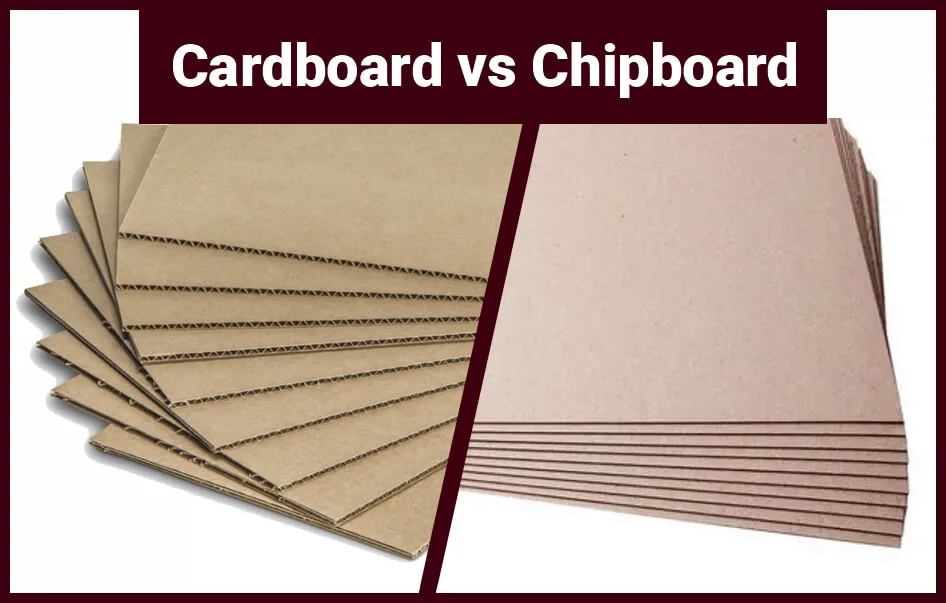
What Are the Best Materials for Architectural Models?
The best materials for architectural models depend on the tujuan of the model and the stage of the design process. Untuk model konseptual, materials like papan busa, kardus, Dan kertas are perfect because they’re cost-effective, easy to manipulate, and quick to work with. As you move into more detailed or presentation models, you’ll want to upgrade to materials like akrilik, kayu, Dan damar, which offer more refinement, daya tahan, Dan presisi. If your model is all about realisme Dan modern finishes, logam Dan kaca should definitely be on your list.
Untuk eco-conscious projects, bahan yang dapat terbiodegradasi, plastik daur ulang, Dan plant-based foams are becoming increasingly popular. These materials not only reduce environmental impact but also add a unique touch to your models, demonstrating your commitment to sustainability.
How Do I Choose Materials for Architectural Models?
Choosing the right material for your architectural model is like picking the right tool for the job—every material has its purpose, and knowing what you need is half the battle. Here are the key factors to consider:
- Project Stage: If you’re in the early conceptual phase, go for flexible, cheap materials menyukai kardus Dan busa. When the design matures, high-detail materials like akrilik Dan kayu will be more appropriate.
- Budget: Material costs vary greatly, so consider your budget constraints. You don’t want to break the bank on a model that’s just for internal testing.
- Time Constraints: If you’re on a tight schedule, go with materials that are quick and easy to work with, menyukai papan busa atau kardus. For more complex models, materials like akrilik atau kayu require more time and effort.
- Design Intent: Think about what your model needs to convey. If you want to showcase modern atau sleek aesthetics, akrilik Dan logam are your go-to materials. Untuk rustic atau alami desain, kayu Dan gabus will work wonders.
What Materials Are Used in Architectural Models for Presentation?
When you need a model that impresses Klien, pemangku kepentingan, atau investor, the material choice becomes crucial. Presentation models demand presisi tinggi, clean finishes, and the ability to highlight key design features.
- Akrilik: Ideal for transparent elements like windows and facades, akrilik offers a sleek, polished look that gives your model a modern feel.
- Kayu: kayu bass Dan kayu balsa are lightweight yet durable, perfect for creating intricate details such as framing, pintu, and windows.
- Damar: For adding small-scale detailing like figurines, lansekap, or even water features, damar allows for high accuracy and customization.
- Logam: For models that need extra strength or to reflect a more industrial look, metals like aluminium atau steel are perfect for structural elements and high-end finishes.
- Papan Busa: For large, basic context models or massing studies, papan busa is cost-effective and easy to work with.
The material you choose should elevate your design, making it stand out Dan speak volumes to those viewing it.
What Eco-Friendly Materials Can Be Used for Architectural Models?
Sustainability is no longer just a trend—it’s a necessity. Fortunately, there’s a growing range of bahan ramah lingkungan that are perfect for architectural model-making. These materials not only reduce your carbon footprint but can also lend a unique aesthetic to your design.
- Biodegradable Materials: Options like plant-based foams Dan biodegradable resins provide sustainable alternatives to traditional plastics, and they still deliver the detail Dan presisi needed for high-quality models.
- Recycled Plastics: Dengan menggunakan plastik daur ulang, you’re giving old materials a second life, while also maintaining the daya tahan Dan strength required for structural elements in your models.
- Recycled Paper/Cardboard: These materials are widely available, cost-effective, and perfect for conceptual or small-scale models. By choosing recycled paper atau kardus, you can stay true to sustainable principles without compromising on model quality.
- Recycled Wood: For those looking to add a natural touch while staying eco-conscious, recycled wood is a great option. It provides the same warmth Dan tekstur as new wood, but without the environmental impact of cutting down trees.
Choosing these eco-friendly materials helps bring your sustainability goals into focus while still producing terperinci, model berkualitas tinggi.


